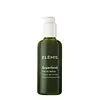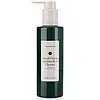What's inside
What's inside
 Key Ingredients
Key Ingredients

 Benefits
Benefits

 Concerns
Concerns

 Ingredients Side-by-side
Ingredients Side-by-side

Water
Skin ConditioningSodium Lauroyl Sarcosinate
CleansingGlycerin
HumectantCocamidopropyl Betaine
CleansingAcrylates Copolymer
Polysorbate 20
EmulsifyingSodium Lactate
BufferingCoco-Glucoside
CleansingGlyceryl Oleate
EmollientDicaprylyl Ether
EmollientLauryl Alcohol
EmollientSodium Chloride
MaskingPhenoxyethanol
PreservativeXanthan Gum
EmulsifyingPersea Gratissima Oil
Skin ConditioningChlorphenesin
AntimicrobialSodium Hydroxide
BufferingCitric Acid
BufferingParfum
MaskingAlpha-Glucan Oligosaccharide
CleansingBrassica Oleracea Italica Seed Oil
EmollientCucurbita Pepo Seed Oil
EmollientGalactoarabinan
Disodium EDTA
Salvia Hispanica Seed Oil
MoisturisingLimonene
PerfumingCitrus Aurantium Dulcis Peel Oil
MaskingSodium Dehydroacetate
PreservativeCaramel
Cosmetic ColorantAmyris Balsamifera Bark Oil
MaskingUrtica Dioica Juice
Skin ConditioningCymbopogon Martini Oil
MaskingGeraniol
PerfumingLinalool
PerfumingRosmarinus Officinalis Leaf Oil
MaskingDaucus Carota Sativa Seed Oil
EmollientBrassica Oleracea Acephala Leaf Extract
HumectantTriticum Aestivum Leaf Extract
AntioxidantMagnesium Aspartate
Skin ConditioningZinc Gluconate
Skin ConditioningMaltodextrin
AbsorbentPolyglyceryl-3 Diisostearate
EmulsifyingChlorophyllin-Copper Complex
AntioxidantHydrogenated Palm Glycerides Citrate
EmollientTocopherol
AntioxidantCopper Gluconate
Skin ConditioningSodium Benzoate
MaskingPotassium Sorbate
PreservativeAscorbic Acid
AntioxidantWater, Sodium Lauroyl Sarcosinate, Glycerin, Cocamidopropyl Betaine, Acrylates Copolymer, Polysorbate 20, Sodium Lactate, Coco-Glucoside, Glyceryl Oleate, Dicaprylyl Ether, Lauryl Alcohol, Sodium Chloride, Phenoxyethanol, Xanthan Gum, Persea Gratissima Oil, Chlorphenesin, Sodium Hydroxide, Citric Acid, Parfum, Alpha-Glucan Oligosaccharide, Brassica Oleracea Italica Seed Oil, Cucurbita Pepo Seed Oil, Galactoarabinan, Disodium EDTA, Salvia Hispanica Seed Oil, Limonene, Citrus Aurantium Dulcis Peel Oil, Sodium Dehydroacetate, Caramel, Amyris Balsamifera Bark Oil, Urtica Dioica Juice, Cymbopogon Martini Oil, Geraniol, Linalool, Rosmarinus Officinalis Leaf Oil, Daucus Carota Sativa Seed Oil, Brassica Oleracea Acephala Leaf Extract, Triticum Aestivum Leaf Extract, Magnesium Aspartate, Zinc Gluconate, Maltodextrin, Polyglyceryl-3 Diisostearate, Chlorophyllin-Copper Complex, Hydrogenated Palm Glycerides Citrate, Tocopherol, Copper Gluconate, Sodium Benzoate, Potassium Sorbate, Ascorbic Acid
Water
Skin ConditioningSodium Lauroyl Methyl Isethionate
CleansingGlycerin
HumectantAcrylates Copolymer
Cocamidopropyl Betaine
CleansingSodium Methyl Oleoyl Taurate
CleansingSodium Laurylglucosides Hydroxypropylsulfonate
CleansingSodium Cocoyl Isethionate
CleansingCitrus Aurantium Bergamia Fruit Oil
MaskingVerbena Officinalis Flower Extract
Skin ConditioningVetiveria Zizanoides Root Oil
MaskingSodium Ascorbyl Phosphate
AntioxidantPanthenol
Skin ConditioningAloe Barbadensis Leaf Juice
Skin ConditioningSodium Hydroxide
BufferingCitrus Glauca Fruit Extract
HumectantMicrocitrus Australasica Fruit Extract
Microcitrus Australis Fruit Extract
Skin ConditioningCamellia Sinensis Leaf Extract
AntimicrobialPanax Quinquefolius Root Extract
AstringentSodium Chloride
MaskingPhenoxyethanol
PreservativeCaprylyl Glycol
EmollientCitric Acid
BufferingPotassium Sorbate
PreservativeHexylene Glycol
EmulsifyingSodium Benzoate
MaskingWater, Sodium Lauroyl Methyl Isethionate, Glycerin, Acrylates Copolymer, Cocamidopropyl Betaine, Sodium Methyl Oleoyl Taurate, Sodium Laurylglucosides Hydroxypropylsulfonate, Sodium Cocoyl Isethionate, Citrus Aurantium Bergamia Fruit Oil, Verbena Officinalis Flower Extract, Vetiveria Zizanoides Root Oil, Sodium Ascorbyl Phosphate, Panthenol, Aloe Barbadensis Leaf Juice, Sodium Hydroxide, Citrus Glauca Fruit Extract, Microcitrus Australasica Fruit Extract, Microcitrus Australis Fruit Extract, Camellia Sinensis Leaf Extract, Panax Quinquefolius Root Extract, Sodium Chloride, Phenoxyethanol, Caprylyl Glycol, Citric Acid, Potassium Sorbate, Hexylene Glycol, Sodium Benzoate
 Reviews
Reviews

Ingredients Explained
These ingredients are found in both products.
Ingredients higher up in an ingredient list are typically present in a larger amount.
Acrylates Copolymer is used as a film-forming agent and texture enhancer.
After applied, Acrylates Copolymer forms a thin film cover that helps skin feel more soft. It can help sunscreens become more water-resistant.
It is also used to make a product more thick.
Learn more about Acrylates CopolymerCitric Acid is an alpha hydroxy acid (AHA) naturally found in citrus fruits like oranges, lemons, and limes.
Like other AHAs, citric acid can exfoliate skin by breaking down the bonds that hold dead skin cells together. This helps reveal smoother and brighter skin underneath.
However, this exfoliating effect only happens at high concentrations (20%) which can be hard to find in cosmetic products.
Due to this, citric acid is usually included in small amounts as a pH adjuster. This helps keep products slightly more acidic and compatible with skin's natural pH.
In skincare formulas, citric acid can:
While it can provide some skin benefits, research shows lactic acid and glycolic acid are generally more effective and less irritating exfoliants.
Most citric acid used in skincare today is made by fermenting sugars (usually from molasses). This synthetic version is identical to the natural citrus form but easier to stabilize and use in formulations.
Read more about some other popular AHA's here:
Learn more about Citric AcidCocamidopropyl Betaine is a fatty acid created by mixing similar compounds in coconut oil and dimethylaminopropylamine, a compound with two amino groups.
This ingredient is a surfactant and cleanser. It helps gather the dirt, pollutants, and other impurities in your skin to be washed away. It also helps thicken a product and make the texture more creamy.
Being created from coconut oil means Cocamidopropyl Betaine is hydrating for the skin.
While Cocamidopropyl Betaine was believed to be an allergen, a study from 2012 disproved this. It found two compounds in unpure Cocamidopropyl Betaine to be the irritants: aminoamide and 3-dimethylaminopropylamine. High-grade and pure Cocamidopropyl Betaine did not induce allergic reactions during this study.
Learn more about Cocamidopropyl BetaineGlycerin is already naturally found in your skin. It helps moisturize and protect your skin.
A study from 2016 found glycerin to be more effective as a humectant than AHAs and hyaluronic acid.
As a humectant, it helps the skin stay hydrated by pulling moisture to your skin. The low molecular weight of glycerin allows it to pull moisture into the deeper layers of your skin.
Hydrated skin improves your skin barrier; Your skin barrier helps protect against irritants and bacteria.
Glycerin has also been found to have antimicrobial and antiviral properties. Due to these properties, glycerin is often used in wound and burn treatments.
In cosmetics, glycerin is usually derived from plants such as soybean or palm. However, it can also be sourced from animals, such as tallow or animal fat.
This ingredient is organic, colorless, odorless, and non-toxic.
Glycerin is the name for this ingredient in American English. British English uses Glycerol/Glycerine.
Learn more about GlycerinPhenoxyethanol is a preservative that has germicide, antimicrobial, and aromatic properties. Studies show that phenoxyethanol can prevent microbial growth. By itself, it has a scent that is similar to that of a rose.
It's often used in formulations along with Caprylyl Glycol to preserve the shelf life of products.
Potassium Sorbate is a preservative used to prevent yeast and mold in products. It is commonly found in both cosmetic and food products.
This ingredient comes from potassium salt derived from sorbic acid. Sorbic acid is a natural antibiotic and effective against fungus.
Both potassium sorbate and sorbic acid can be found in baked goods, cheeses, dried meats, dried fruit, ice cream, pickles, wine, yogurt, and more.
You'll often find this ingredient used with other preservatives.
Learn more about Potassium SorbateSodium Benzoate is a preservative. It's used in both cosmetic and food products to inhibit the growth of mold and bacteria. It is typically produced synthetically.
Both the US FDA and EU Health Committee have approved the use of sodium benzoate. In the US, levels of 0.1% (of the total product) are allowed.
Sodium benzoate works as a preservative by inhibiting the growth of bacteria inside of cells. It prevents the cell from fermenting a type of sugar using an enzyme called phosphofructokinase.
It is the salt of benzoic acid. Foods containing sodium benzoate include soda, salad dressings, condiments, fruit juices, wines, and snack foods.
Studies for using ascorbic acid and sodium benzoate in cosmetics are lacking, especially in skincare routines with multiple steps.
We always recommend speaking with a professional, such as a dermatologist, if you have any concerns.
Learn more about Sodium BenzoateChances are, you eat sodium chloride every day. Sodium Chloride is also known as table salt.
This ingredient has many purposes in skincare: thickener, emulsifier, and exfoliator.
You'll most likely find this ingredient in cleansers where it is used to create a gel-like texture. As an emulsifier, it also prevents ingredients from separating.
There is much debate on whether this ingredient is comedogenic. The short answer - comedogenic ratings don't tell the whole story. Learn more about comegodenic ratings here.
The concensus about this ingredient causing acne seems to be divided. Research is needed to understand if this ingredient does cause acne.
Scrubs may use salt as the primary exfoliating ingredient.
Learn more about Sodium ChlorideSodium Hydroxide is also known as lye or caustic soda. It is used to adjust the pH of products; many ingredients require a specific pH to be effective.
In small amounts, sodium hydroxide is considered safe to use. However, large amounts may cause chemical burns due to its high alkaline.
Your skin has a natural pH and acid mantle. This acid mantle helps prevent harmful bacteria from breaking through. The acid mantle also helps keep your skin hydrated.
"Alkaline" refers to a high pH level. A low pH level would be considered acidic.
Learn more about Sodium HydroxideWater. It's the most common cosmetic ingredient of all. You'll usually see it at the top of ingredient lists, meaning that it makes up the largest part of the product.
So why is it so popular? Water most often acts as a solvent - this means that it helps dissolve other ingredients into the formulation.
You'll also recognize water as that liquid we all need to stay alive. If you see this, drink a glass of water. Stay hydrated!
Learn more about Water